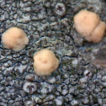
Multiple species delimitation approaches with COI barcodes poorly fit each other and morphospecies – An integrative taxonomy case of Sri Lankan Sericini chafers (Coleoptera: Scarabaeidae)
Sign Up to like & getrecommendations! Published in 2022 at "Ecology and Evolution"
DOI: 10.1002/ece3.8942
Abstract: Abstract DNA taxonomy including barcoding and metabarcoding is widely used to explore the diversity in biodiversity hotspots. In most of these hotspot areas, chafers are represented by a multitude of species, which are well defined… read more here.
Keywords: sericini chafers; coleoptera scarabaeidae; chafers coleoptera; delimitation ... See more keywords

Assessing diversity of King Crab Lithodes spp. in the south‐eastern pacific using phylogeny and molecular species delimitation methods
Sign Up to like & getrecommendations! Published in 2022 at "Ecology and Evolution"
DOI: 10.1002/ece3.9143
Abstract: Abstract The purpose of this study was to test the hypothesis that the genetic diversity of commercially significant species of King Crabs (Lithodes spp.) along the south‐eastern Pacific (SEP) comprises different independent evolutionary units (IEUs)… read more here.
Keywords: eastern pacific; south eastern; lithodes spp; delimitation ... See more keywords

Buffer zone delimitation of conservation units based on map algebra and AHP technique: A study from Atlantic Forest Biome (Brazil)
Sign Up to like & getrecommendations! Published in 2021 at "Biological Conservation"
DOI: 10.1016/j.biocon.2020.108905
Abstract: Abstract A buffer zone can be defined as the surroundings of a protected area, restricting human activities, such as irregular urban growth, hunting, logging, and unsustainable agriculture. The general objective of this research was to… read more here.
Keywords: zone; atlantic forest; conservation; delimitation ... See more keywords

Transect-based trapping for area-wide delimitation of insects.
Sign Up to like & getrecommendations! Published in 2023 at "Journal of economic entomology"
DOI: 10.1093/jee/toad059
Abstract: Typical delimitation trapping survey designs for area-wide (nonlocalized) insect populations are regularly spaced grids, and alternative shapes have not been evaluated. We hypothesized that transect-based designs could give similar detection rates with significantly shorter servicing… read more here.
Keywords: trap; insects; area; delimitation ... See more keywords

Incongruence in molecular species delimitation schemes: What to do when adding more data is difficult
Sign Up to like & getrecommendations! Published in 2018 at "Molecular Ecology"
DOI: 10.1111/mec.14590
Abstract: Using multiple, independent approaches to molecular species delimitation is advocated to accommodate limitations and assumptions of a single approach. Incongruence in delimitation schemes is a potential by‐product of employing multiple methods on the same data,… read more here.
Keywords: delimitation schemes; molecular species; delimitation; evidence ... See more keywords

Species delimitation of the northeastern Anatolian Symphytum (Boraginaceae) taxa
Sign Up to like & getrecommendations! Published in 2021 at "Phytotaxa"
DOI: 10.11646/phytotaxa.516.3.3
Abstract: Symphytum is regarded one of the most complicated genera in terms of the classification of its members among the Boraginaceae. In addition to different infrageneric classification methods, several species complex or aggregates have been proposed… read more here.
Keywords: symphytum; savvalense sylvaticum; delimitation; taxa ... See more keywords
Integrative taxonomy by molecular species delimitation: multi-locus data corroborate a new species of Balkan Drusinae micro-endemics
Sign Up to like & getrecommendations! Published in 2017 at "BMC Evolutionary Biology"
DOI: 10.1186/s12862-017-0972-5
Abstract: BackgroundTaxonomy offers precise species identification and delimitation and thus provides basic information for biological research, e.g. through assessment of species richness. The importance of molecular taxonomy, i.e., the identification and delimitation of taxa based on… read more here.
Keywords: taxonomy; new species; molecular species; delimitation ... See more keywords

Comparative cypsela morphology in Campuloclinium DC. and contributions to Eupatorieae tribe (Asteraceae) systematics.
Sign Up to like & getrecommendations! Published in 2022 at "Anais da Academia Brasileira de Ciencias"
DOI: 10.1590/0001-3765202220210100
Abstract: Cypselae anatomical studies have helped to understand the evolution and classification of some groups within Asteraceae. In Eupatorieae, there are many uncertainties about the Campuloclinium circumscription. There are currently two classifications for the genus, and… read more here.
Keywords: cypsela morphology; delimitation; campuloclinium; comparative cypsela ... See more keywords

Neoprotoparmelia gen. nov. and Maronina (Lecanorales, Protoparmelioideae): species description and generic delimitation using DNA barcodes and phenotypical characters
Sign Up to like & getrecommendations! Published in 2018 at "MycoKeys"
DOI: 10.3897/mycokeys.44.29904
Abstract: Abstract Multilocus phylogenetic studies revealed a high level of cryptic diversity within the lichen-forming fungal genus Maronina (Protoparmelioideae, Parmeliaceae). Coalescent-based species delimitation suggested that most of the cryptic molecular lineages warranted recognition as separate species.… read more here.
Keywords: dna; gen nov; delimitation; using dna ... See more keywords

MtDNA species-level phylogeny and delimitation support significantly underestimated diversity and endemism in the largest Neotropical cichlid genus (Cichlidae: Crenicichla)
Sign Up to like & getrecommendations! Published in 2021 at "PeerJ"
DOI: 10.7717/peerj.12283
Abstract: Crenicichla is the largest and most widely distributed genus of Neotropical cichlids. Here, we analyze a mtDNA dataset comprising 681 specimens (including Teleocichla, a putative ingroup of Crenicichla) and 77 out of 105 presently recognized… read more here.
Keywords: underestimated diversity; diversity; group; crenicichla ... See more keywords